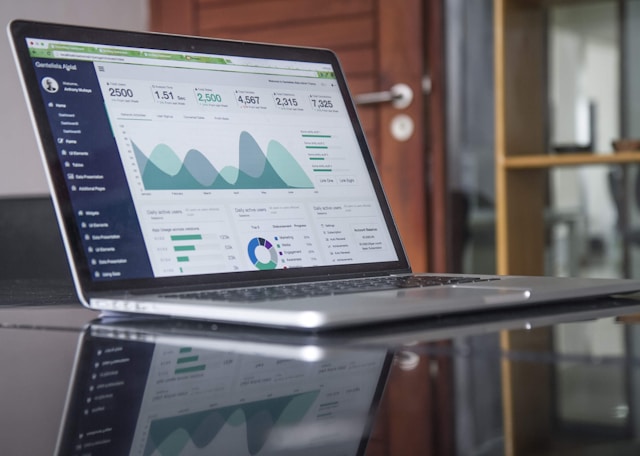It’s important to review your account using Twitter analytics regularly. It aids social listening and enables you to understand the public’s perception of your brand. But then, to optimize your image, improve strategies, and overcome challenges in your industry, you need to practice Twitter benchmarking.
Developing a benchmarking strategy is essential for online brands seeking efficiency and effectiveness. The proper scrutiny and analysis of your opponent’s content can be the break you need. So, this post explains how to elevate your marketing on Twitter through comparative and competitive analysis.

Understanding Twitter Benchmarking
Twitter or X benchmarking refers to account evaluation involving comparison against competitors. From this definition, it’s evident that analyzing your account for future projections is insufficient as it limits perspectives.
Let’s say you already understand your post performance on X, but how about that of your competitors? Are their posts getting sufficient engagement? You need to discover how often they post, what they say, if customers enjoy their services, and more.
After discovering all the necessary information, you can use it to compare your competitor’s performance to yours. The end goal of this comparison is to scale your brand and become top-rated. Though benchmarking takes time, it’s a reliable growth guide.
Proper processing and analysis of information will enable you to make data-driven decisions. And, of course, with structured data guiding your actions, you can’t go wrong. Therefore, you’ll attain maximum productivity and quickly climb the ladder of success.
The ultimate purpose of benchmarking is to build a strong brand social media strategy. It’ll also strengthen your brand’s social media presence, enabling you to know your Twitter target audience.
If you can impress your target audience, converting them to followers and customers will be easy. So, the process of comparative and competitive analysis results in growth. That’s why it’s an indispensable practice that good social media managers employ.
However, you don’t have to employ a social media manager to perform Twitter, aka X, benchmarking. So long as you have the necessary data, you can learn and experiment.

The Benefits of Benchmarking on X
There are many benefits of benchmarking on X, formerly known as Twitter. First and foremost, it aids a thorough understanding of your business and industry. This practice enables business owners to monitor their performance and that of top brands, increasing efficiency and output quality.
One of the basic procedures in benchmarking is identifying your competitors. Identifying your opposition helps you analyze them, their products, strengths, and weaknesses, propelling you to do better. Therefore, it presents you with a chance to win their dissatisfied customers to your brand.
By providing needs your opposition fails to meet, you’ll serve customers better and satisfy them. As a result, consumers will develop an interest in your products and services. Additionally, studying your competition enables you to recreate effective strategies based on their experience.
By flagging functional strategies and practices, brands can set new goals and targets. The achievement of these Key Performance Indicators leads to continuous improvement, which can positively influence sales and cash flow. Therefore, a good benchmarking strategy can help your brand or business to scale challenges and grow.
Furthermore, monitoring your competitors’ successes will help you to remain alert and ready to adjust to trends for better results. Thanks to benchmarking on Twitter, your eyes will constantly stay on the prize.
Whether you’re a random Twitter user, an influencer, or a brand desiring progress, benchmarking can aid your elevation. It’ll give you competitive insight, enabling you to design winning strategies that put you over and above every opponent.
Basic Twitter Benchmarking Strategy Example
You may wonder if there’s a specific benchmark strategy for all brands to follow. There is no rigid structure guiding benchmarking on X. Though there are specific vital processes to follow, brands can decide on suitable action plans. But this has to be a careful, well-thought process. So, outline your plans before starting.
Here’s a benchmarking strategy example to help you comprehend better. Assuming you own a pizzeria in Texas, your first step should be to create a business account on X. If you already have one, focus on growing your X followers and establishing a strong presence on the social network.
Then, thoroughly evaluate your services, activities, and interactions before recording unbiased results. It would help if you then decided on the benchmarking category to perform. It could be technical, performance, competitive, or a combination. The data you’ll collate depends on your decision.
Now, you can begin scouting your competitors (popular pizza places in Texas). Then, data on their activities, customer relations, and policies will be collected. It’s best to track your competitors’ data with a monitoring tool.
You can surveil their campaigns and results and observe their tweets and the responses they get. There are numerous metrics to look for, so consider your aims and select what to note.
With the necessary data, all left is to embark on competitive, comparative, and sentiment analyses. These processes will bring all relevant details to the limelight and guide you in formulating strategies and making data-driven decisions. So, keep reading to learn more about the procedures involved in a proper benchmarking strategy.

Understanding Twitter Competitor Analysis
A Twitter competitor analysis involves searching out your top competitors (direct and indirect) that offer the same services as you. After identifying them, there’s a long process of observance. It involves monitoring their social media activities and researching their marketing strategies.
1. How To Perform Competitor Analysis on X
A competitive analysis starts with collecting data about your opposition. You can identify their strengths and weaknesses with information from your competitors’ content and tweets. This way, you can make decisive plans and take action to dominate the industry.
So, here’s a breakdown of seven steps for conducting a competitor analysis.
- Identify your competitors through a Twitter advanced search, Google search, or Twitter hashtag tracker. Narrow them down to your niche and location.
- Analyze their target audience to ensure you’re marketing your products to the right people.
- Review the quality of your competitors’ followers and their engagement rates. Doing this will enable you to discover if your Twitter engagement rate is okay.
- Dissect your competitors’ content to learn the nature of their tweets, number, frequency, and content type. It’ll help you find the best time to post on X.
- Discover how the audience responds to their content. With this, you can trace top-performing posts and identify the common element.
- Employ social listening skills to learn what the target audience says about you and your competitors. You can find strong emerging competitors through this.
- Embark on investigative analysis to find out what your competitors are researching.
A thorough Twitter competitive analysis will lead you to make data-driven decisions. You can find more information on your competitors depending on what you hope to achieve. But you must devote time and effort for this to work effectively.
However, a simpler option is using competitor analysis tools if this is stressful. Metricool and TweetBinder are excellent tools that can curate comprehensive reports for evaluation, which you can try.
2. How To Use Data From Competitive Analysis
Competitive analysis is a major part of benchmarking as it facilitates the discovery of beneficial practices and trends. It’ll also sharpen your understanding and help you formulate a feasible and effective action plan.
The results of the competitive analysis provide a clear insight into ranking metrics. As such, you can deduce the brands with the most followers, interactions, comments, and satisfied customers. Similarly, you’ll discover business aspects where brands have poor performance.
So, it becomes easier to consolidate your efforts in areas where other brands experience challenges to ensure a victory. Here’s a good example of how to apply insight from competitive analysis. Assuming you use tweet frequency to decipher the content schedule of major brands in your industry.
It’ll be easy to find their most active times, which are likely the best posting times for your industry. That’s an easy way to use timing to gain attention and attain publicity!
Also, studying the content of top brands will lead you to discover effective patterns for attracting attention.
Also, finding the most interesting content type can help you develop a perfect ratio of text to visual content. Additionally, identifying high-performing posts can guide you in discovering and formulating an effective publishing pattern, thus increasing efficiency.
Summarily, competitive analysis can help you track the evolution of your competitor’s account. You can learn about their follower growth, lead conversion, and sales. These metrics will enable you to understand the effects of social media on the growth curve of companies in your industry.
Therefore, you’ll know what to expect at every step of the way. With this foresight, you can prepare properly to prevent poor performance.
How To Compare Twitter Accounts
To formulate effective benchmark strategies, one must compare Twitter accounts. This act facilitates the discovery of similarities between notable brands in a specific field. Comparing accounts requires a lot of statistics, which Twitter analytics can’t provide you with. So, you have to outsource the job and use a third-party tool.
However, finding a tool won’t be a problem as there are many. Interestingly, these tools have multiple functions, including tweet scheduling, sentiment analysis, hashtags, and campaign tracking.
If you need a tool to compare your Twitter account, you can use HypeAuditor. It’s a free tool for generating statistical data. With Hypeauditor, you can discover a brand’s activity rate and generate accurate reports reflecting this. However, you’ll have to create statistical reports for each brand individually.
You may wonder what this statistical data entails. Some major Key Performance Indicators to collate and compare include Twitter content reach and frequency. Others are tweet average, number of responses, and reactions to tweets.
It’s easy to get all this information using the Twitter standard search. Note that all the above focuses on comparing accounts using their output and reactions to it. However, you can also compare brands using their Twitter mentions.
When collating mentions, you get to see tweets from the general public about the account. By comparison, you can determine the average impressions you need, your tweet ratio, and other relevant information.

Discovering What Twitter Sentiment Analysis Is
Twitter sentiment analysis, or opinion mining, involves evaluating and interpreting tweets. As a brand, you can analyze your tweets to finetune your voice. You can also run a Twitter sentiment analysis check for your competitor’s tweets and public mentions.
1. Applying Twitter Sentiment Analysis in Benchmarking
Brands on X get their validity from their customers, comprising their followers and target audience. That’s why they all share a common goal of satisfying their customers. Consumers often rant about products they hate on Twitter. But if they love a product, they publicize it, thus generating free content and publicity for the brand.
This visibility influences business ranking as the hype attracts more people and boosts sales. So, it’s important to understand how the audience digests content, their perception of brands, and reactions to products and services. But this is only possible when you study their tweets to analyze the sentiments and emotions behind them.
Thanks to analytic tools, you won’t have to do this manually. Sentiment analysis tools curate public mentions of brands and grade their polarity using Natural Language Processing and Machine Learning algorithms.
The grading system categorizes tweets into negative, positive, and neutral, showing the number of tweets in each category. So, you can analyze sentiments for similar brands to learn which has more positive comments from the audience.
Therefore, sentiment analysis interprets the public’s perception of brands and their satisfaction rating. It’s also a direct channel for hearing your audience’s needs and discovering if you’re meeting their expectations. You can also discover what brands meet customers’ demands and the needs they miss.
With this, you’ll have a perfect opportunity to improve your products or services and cover all areas of deficiency. The best part is that you’ll get free feedback anytime you implement a change without asking.
2. Other Uses of Sentiment Analysis on X
Sentiment analysis has many advantages, the most pronounced being the classification of public opinion. Besides this, the evaluation of tweets can tell you whether or not your competitors hold you in high esteem. It even enables brands to discover new competitors and loopholes through the words of their followers.
Opinion mining can shape trends and simplify decision-making. You can even use it to filter urgent customer support requests. But remember that as you’re evaluating your competitor’s tweets, they may be doing the same. So, you must constantly intensify efforts to maintain a pristine image.
Hence, you must avoid posting or interacting with offensive or discriminatory tweets. You may wonder what to do if you’ve indulged in such actions in the past. Well, it would be best to rectify your mistakes before a competitor’s Twitter benchmarking strategy draws attention to them.
That’s why it’s advisable to filter and delete tweets in bulk periodically. Luckily, TweetEraser’s web tool makes this easy. With an active subscription, you can load, filter, and delete historical and current tweets. What’s more? This tool guarantees an ad-free experience. So, start filtering your tweets today!





